It might be a bit of an understatement to say that Leder Games has been on a roll lately. From the continued content snatched up for the ever-popular woodland wargame, Root, to the buffed up designs of Vast’s new standalone game, The Mysterious Manner, Leder Games has set itself a reputation of publishing terrific titles with killer components. But what if we cut out the Kickstarter this time and saw them funding a game straight to retail themselves. Now make that game a reworking of a title that’s something of a cult classic in the hobby, beloved by many but nearly impossible to find a copy of. Now reimagine it with a fresh theme and artwork and produced in Leder’s signature style of high quality components. And then set the price at only $30.
You’d get Fort, and it’s this humble reviewer’s opinion that if you’re the type who hates waiting for games to go to reprint, you’ll want to consider getting on this preorder for sure. But is it for you? That’s always the bigger question, isn’t it? Let’s have a look.
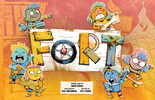 Fort
Fort
Developer: Nick Brachmann
Designer: Grant Rodiek
Publisher: Leder Games
Number of Players: 2- 4
Play Time: 20 - 40 minutes
Price: $30
Copy Provided By Publisher
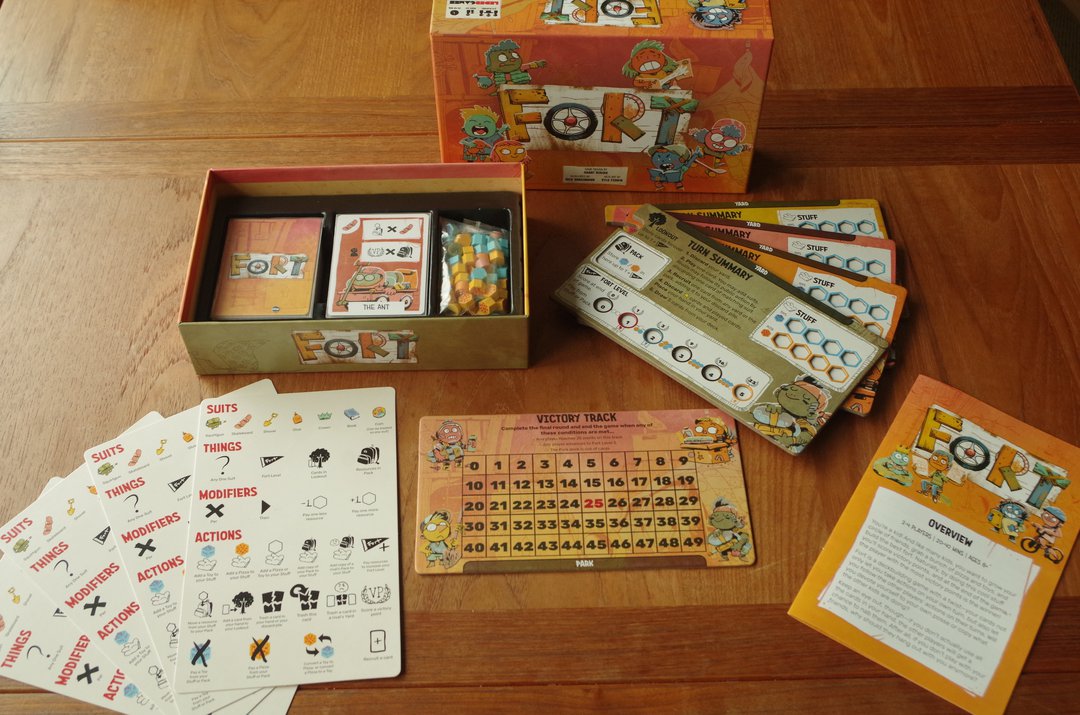
Everything you get in the box! Card sleeves not included (yes, I sleeved this game, don't judge me).
Good Things Come Around Again
Fort is something of a second iteration of an older game called SPQF, a pun on the abbreviation SPQR (roughly meaning “the senate and the people of Rome”). It was a game where players built empires by layering in cards near a small player board, attempting to out-build their opponents in some rather cute artwork and clever gameplay themed around creatures of the forest ala ancient Rome (hence the “F” in the abbreviation). I’ve not played SPQF myself, due mainly to the aforementioned difficulty in tracking down a title at anything close to a reasonable cost. This game, regrettably, was well out of my reach by the time I’d come across the name.
With Fort, there’s now an opportunity for those in the know to get a hold of this wonderful design once again, as well as a chance for newcomers to partake! Grant Rodiek’s original design is refreshed and reimagined, and with the help of Leder’s own Nick Brachmann the game now takes on the theme of kids competing to build the best fort in the neighborhood. It’s brought to life by the signature art style of Kyle Ferrin, as well, so fans of both the original game and that adorable “Leder look” both have something to look forward to here.
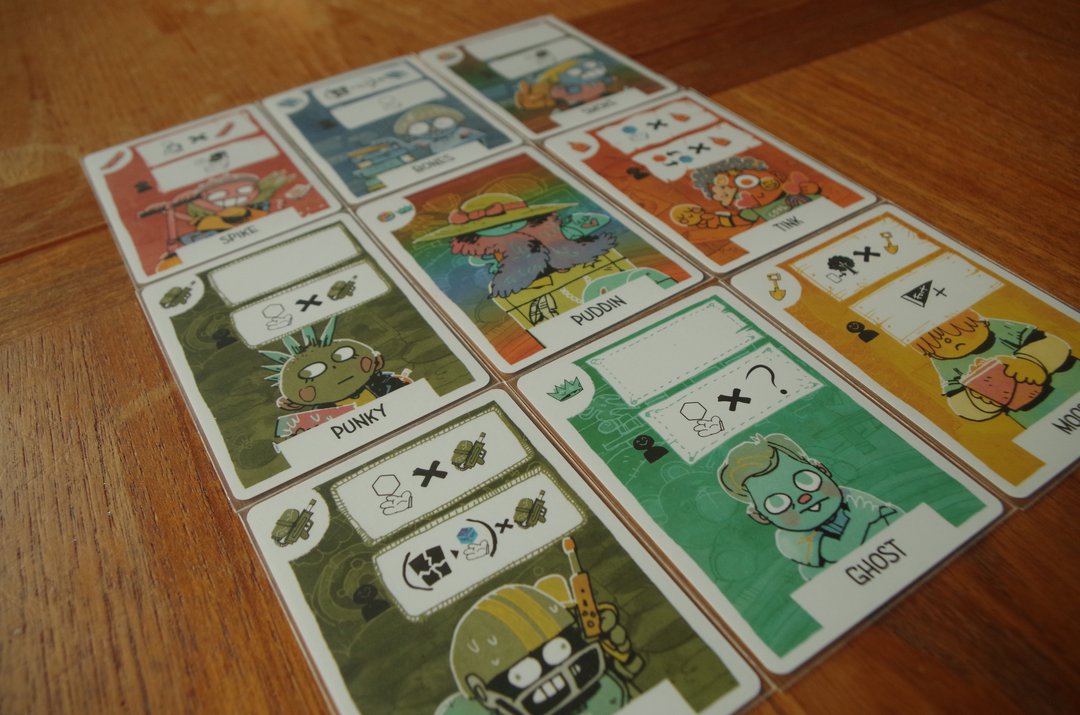
Seriously, Kyle's awesome art style is indivisible from Leder Games's image, right?
The game is something of a blend between hand management and a light deck builder. On your turn you’ll play a single card out of your hand. If that card’s powers can be boosted by extra symbols of the same type, you can play more cards with it too. You’ll then resolve both the public ability of your card (that other players can pay to copy) and a private ability (that only you get to partake of). You clean up for the turn by drafting a new card into your discard pile from some public offerings, and any cards left in your hand are put face up into your “yard,” part of that public area that other players can draft cards from if they don’t like the ones in the center of the table. If your best friends (they have a star next to their name) were in your hand unplayed, they always go in your discard; your besties will never leave you to play with other kids. Fill your hand back up to five cards and play passes to the next player.
The idea here is to build yourself, as in many board games, a little engine. Maybe you double down on the skateboard suit, filling your deck with like symbols so that you can draw hands that allow you to burst forth in resources ever couple of turns. Maybe instead you try to thin your deck, using squirt gun kids to drive off others from the game, making it leaner and more efficient. Maybe instead you take a balanced approach, spreading yourself across multiple suits so you always have a variety of symbols in hand, perfect for copying the plays of other players. There’s no one right approach here, and you’ll soon find that victory is just as much about keeping an eye on the neighbor’s kids as it is pushing forward with your own grand design.
The game ends following a round of turns in which any one of the following conditions have been met: a player builds their level 5 fort upgrade, a player reaches 25 bonus points on the point track, or the deck runs out of cards. You add up all your points from your fort level, any bonus points you’ve earned, and any extra score bonuses you might be holding. Highest total has the coolest fort on the block!
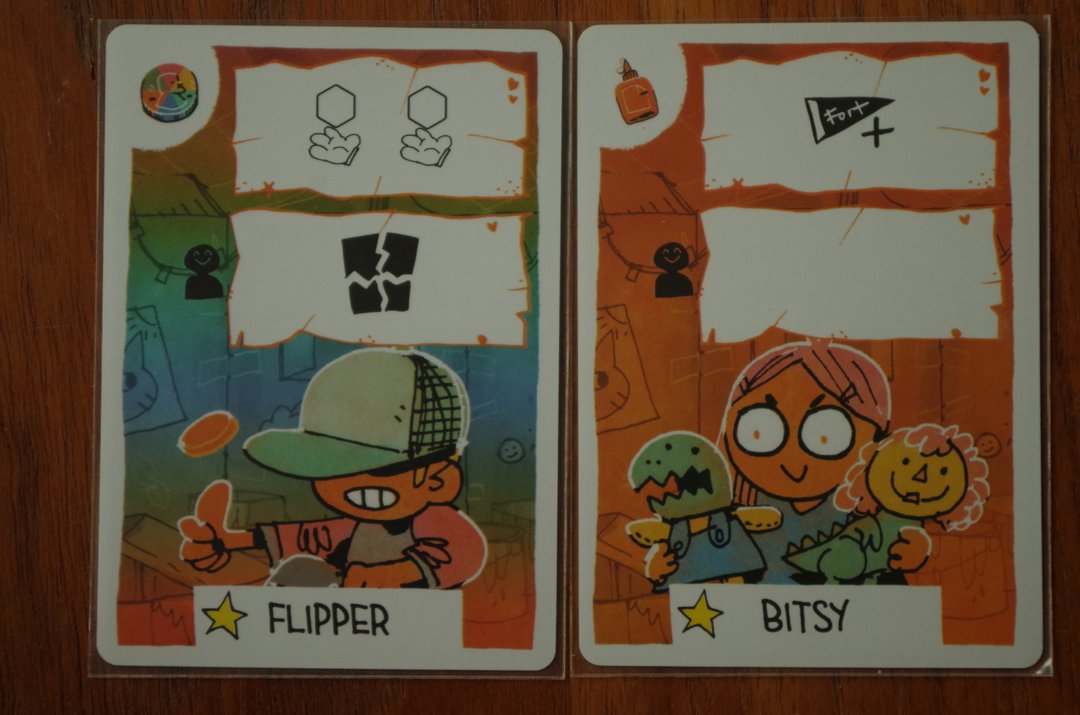
All best friend cards give players the same basic set of abilities, ensuring they don't lock themselves in an early situation they can't play out of. Everyone gets 1 wild suit (the coin) and one matching their player board (glue featured here).
Clever Kids
For as simple as Fort is, this game is super smart. Adding to the strategy of your growing gang of kids are some bonuses you can shoot for, some hidden and some visible. At the start of the game a handful of Made Up Rule cards, which act as endgame bonuses, are shuffled and dealt face down. You will never be quite sure which ones are in the game until you draw one, which you earn after you upgrade your fort to level 1. The catch here is that you get to peek at all the face down cards and select one when you earn them, gaining a valuable first pick but also a first look at what other bonuses your opponents will be taking. The second player to earn a made up rule will still get a decent choice, but they won’t know what the first player took. And the last group of kids to invent a rule will have much less idea what everyone’s taken. Not to say you can’t observe and guess. The rulebook has a reference of all the made-up rules, so you can always try watching your friends’ plays and try your best to mess them up.
Likewise, reaching level 2 on your fort gives you a pick of the face up Perk cards. Since these are visible for everyone, they can make a tasty incentive to lunge for, a strategy boost you can build your deck towards if you’re so inclined. It never gets old swiping one of these out from under your opponents a turn before them, hearing that satisfying “I was totally going to take that” from across the table.
All the while you’re trying to balance playing as many cards as you can so that those useful abilities stay in your discard pile at the end of each turn. Remember that any unplayed cards, short of your two besties, go into your yard where they can be drafted by other players. Oh, you didn’t play with Bug or The Moles this turn? They might just take a hike across the street and go play with someone else! As per the rules, you cannot simply burn cards for effects that don’t change the game state; you can’t protect cards by getting them into your discard with no effect. Whether you then choose to play the perfect card you really need on your turn or another one you just know your friends will swipe if it hits your yard, just to protect it, is always a tough decision. Similarly, sometimes you’ll draft your new card from a neighbor’s yard just to dismantle a key piece of their engine, passing on much better choices for your own in the process. Fort is simple to play, but it offers a lot of nuance and subtlety that everyone will enjoy sinking their teeth in to.
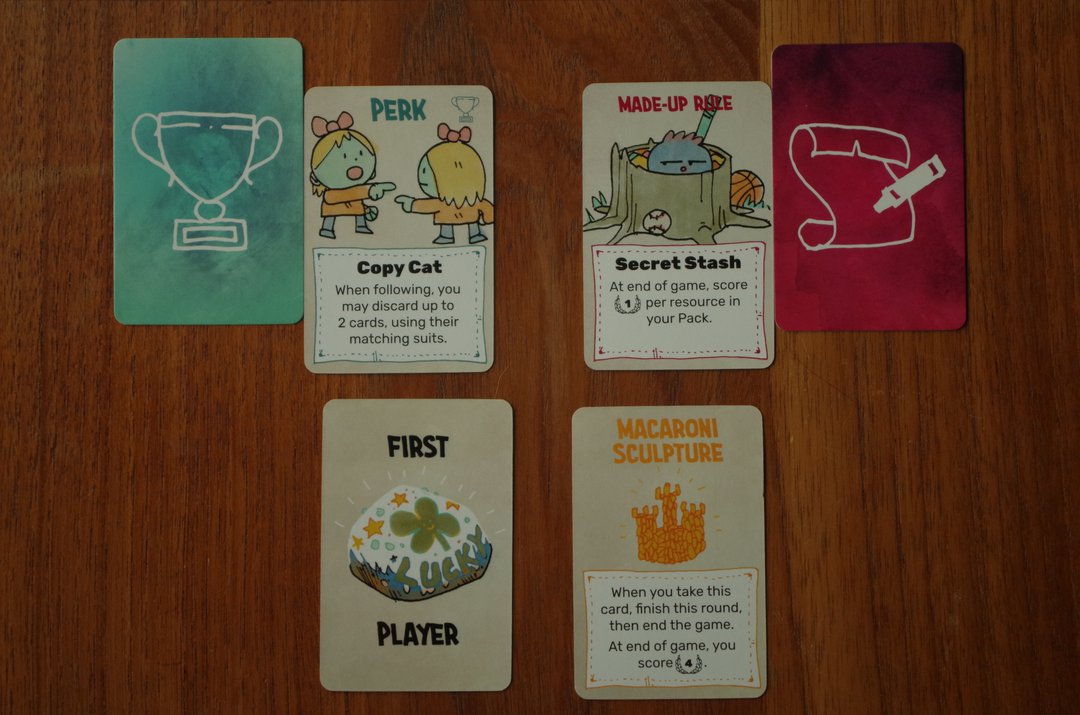
Front and back samples of the Perks and Made Up Rules, as well as the first player marker and another end game bonus card.
It also works great at all player counts! The majority of my early games were at 3 and 4 players, giving me a pretty decent view of how Fort behaves in that familiar multiplayer chaos. There’s a little more incentive in these games to copy the plays of other players, as this allows you to get a few extra cards safely into your discard between your turns. Nothing’s more frustrating that having to take your pick from meager offerings in the center of the table (or blindly from the deck) because all your opponents did a better job than you of prioritizing copying or stacking similar suits, leaving you nothing in their yards, while they continue to take their pick of yours. At the higher player counts, this game can suffer a little bit from a “pick on the same player” effect, usually while everyone’s still learning the game, allowing another player to surge ahead while everyone takes selfish choices of cards from the same player’s unprotected yard, not thinking to hamper a growing leader. It’s not something that’s unique to Fort, but it’s worth noting. It’s almost a little bit like a game of Root in which players don’t recognize who should be their target early on, giving that player an advantage. With experience, this drops off, though. Overall, I think the 3 and 4 player games are a joy, embracing all the extra action you want out of a multiplayer game.
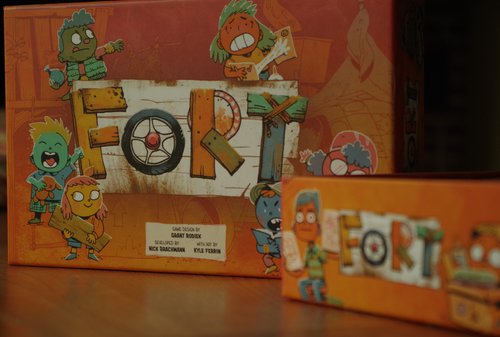
The two player game loses out on absolutely nothing. As you’d expect, it drops a lot of the unpredictability of having more turns between your own, and it replaces them with very tactical 1v1 decisions. You’ll naturally have more cards hitting your yard if you don’t choose to do a matching suit strategy, since you can only potentially follow one card between turns. As it’s that much easier to keep track of everything your opponent does, two player games feel very chess-like. You know exactly the moment when you can steal Moose from your opponent’s yard, stopping those annoying fort upgrade actions that are private, hampering your ability to copy and keep up. Can you keep track of what you think your opponent’s made-up rule is, putting a block on their end game scoring bonus? And how does your chosen approach not only advance your cause but also protect you from your opponent’s direct advances? In my first ever 2 player game, I matched up a bonus point rush strategy against my opponent’s aggressive fort building. If they hit the level 5 fort before I hit 25 bonus points, there was no way I was going to catch up to them for a win. The game was a brutal race that came down to the wire, all the while taking targeted swipes at one another's yards!
Two player games are no less thrilling than those at higher player counts, so if you have only one dedicated gaming partner you both can breathe easy knowing Fort will still rock your game nights. I was going to share my personal favorite player count, but it’s just that. It’s my favorite and not really something too useful for this review. Truth be told, there’s absolutely no reason to let player count be a discounting factor in your purchasing of this game. It loses none of its signature brilliance whether you have one opponent or several.
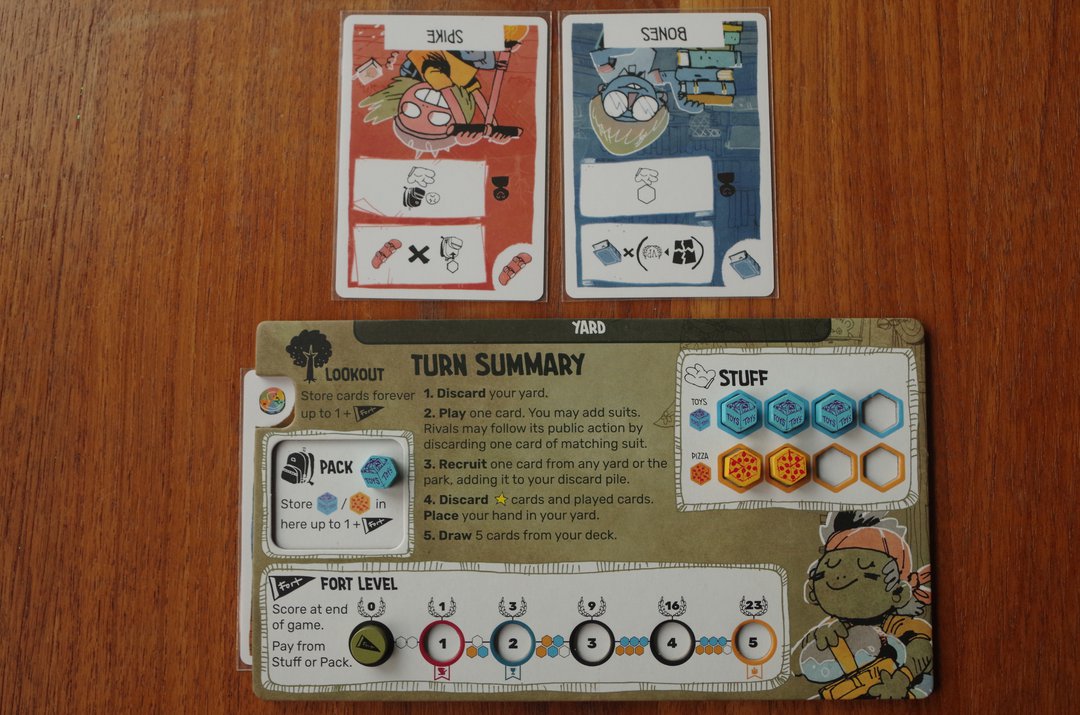
Sample player board with cards in the yard. A nice touch in the rules is that you put them upside down so other players can more easily read them.
Dig Like A Shovel Kid
Let’s talk theme for a second here. With no disrespect to SPQF, a game that looks lovely in its own right, I really can’t say anything bad about the reskin of this game from civilization building to making a fort. Everything just clicks. The two resources you collect, pizza and toys, well—what else do you need to make an awesome fort? Cards you don’t play can be drafted by other players, represented by kids just hanging out in your yard with nothing to do until someone else comes along and says “come play with us.” The made up rules? I mean who hasn’t seen kids just make up new rules to games on the fly! Yes, I know many of these concepts aren’t novel, but like the time travel mechanic in Anachrony, they feel right. If you’re strictly a lover of gameplay, Fort won’t disappoint in its solid design, but if you’re also the type to need a strong theme to drive your engagement, I’m happy to say I think it delivers on that front as well. Our (digital) table was laughing uncontrollably when Wyatt put The Ant, a kid who rolls around on his stomach in his little red wagon, up into his lookout. We all said it was a liability. He said he just liked making all the parents nervous.
And the component quality! Everything just shines inside this box. We’ve got cards on decent stock plus an insert that fits them sleeved if you’re so inclined. Thick, recessed player boards ensure your tokens won’t lose their place if someone bumps the table, and the resource tokens are printed to look like little pizzas and toy boxes! The game comes with some nice, large, glossy reference cards you can sit around the table as folks are learning the symbols, which is always helpful. And there’s no wasted space in this smaller box, making it perfect to take to any game night or simply not being a shelf hog at home. All of this comes in a sturdy package that’s only priced at $30! You get a lot of value for not a lot of moolah with this game, and as the simplest of tabletop things, a physical bit of art that’s a pleasure to behold on your table and flip around between your fingers, it fires on all cylinders. Leder Games hasn’t compromised at all in this department, retaining their signature style of high production quality.
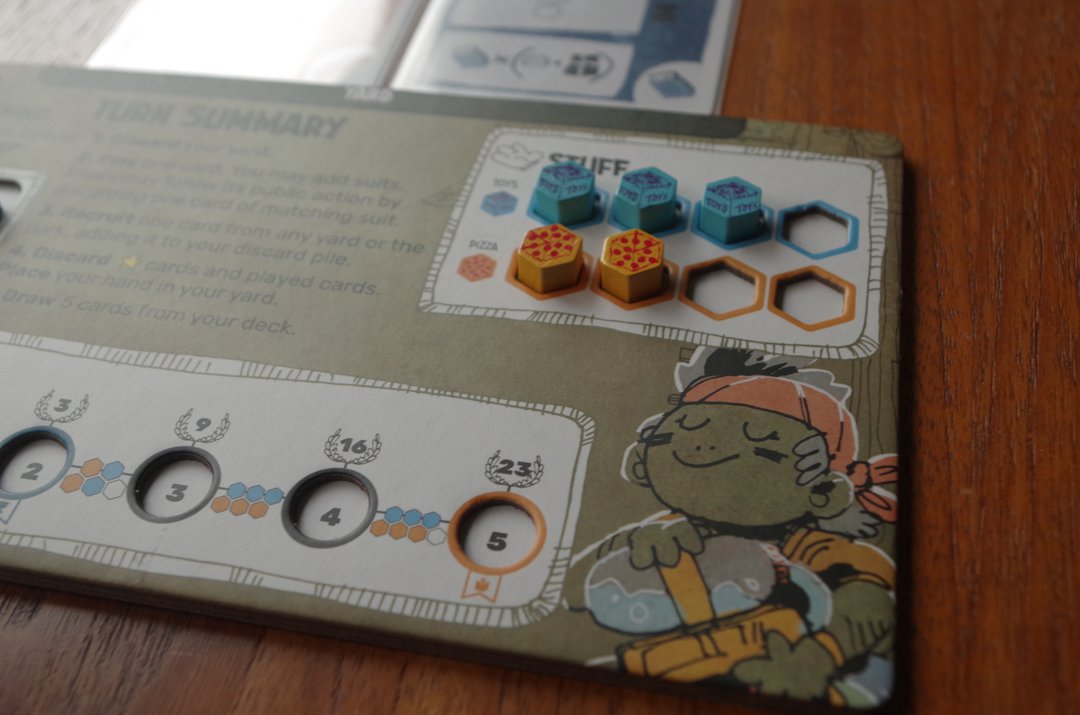
Printed resource tokens, recessed boards, rules reference on the player board, and so much lovely art! Try not to drool on the components.
Counter-Considerations
As enamored with this game as I am, and as strongly as I’d recommend it to you now if you’re liking what you’re seeing, there are some people who still won’t play Fort with me. They know what they like, and this just isn’t it. If you’re one of these types of folks, you might find that this game doesn’t suit you quite as well as the hype would lead you to believe, so here’s my big consideration for potential purchasers.
This game is very interactive. For me that’s a selling point, but I also appreciate that I play games with a variety of people, and some don’t appreciate having pieces of their engine swiped away. Fort can be surprisingly cutthroat at times. It’s only a matter of time until someone takes a kid out of your yard that was an integral part of your plan. You might find that, in a 3 or 4 player game, you’re that one person everyone seems to keep taking cards from, something that can feel like getting kicked when you’re already down. And some of the Perk cards can be outright nasty. Rough Housing is once-use only, but it allows you to trash (i.e. remove from the game) a single card someone plays after it’s resolved. Seeing that card face up on the table, staring at you as you tensely play each turn, is one of many signals that this game wants players to get in each other’s faces. You need to be ok with that.
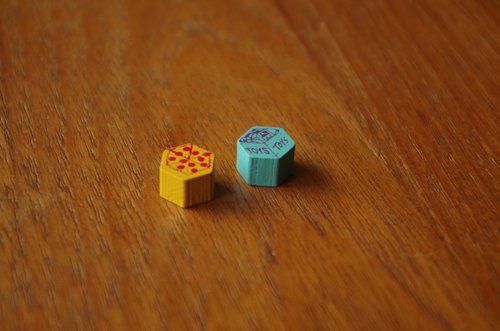
And that is, in fact, my single biggest concern for potential purchasers. If I’m being completely honest here, I think this game with its small box, fantastic price point, adorable art, and accessible gameplay is going to appeal to the vast majority of gamers and new-to-boardgames people alike. If you’ve followed me on Twitter, you’ve probably caught me saying more than once that I think this game is going to sell out of its first print run in a blink. So if you’re thinking Fort is for you, I cannot encourage you enough to get on this preorder now if you don’t want to wait for a second print run. However, I appreciate that Fort still won’t be for absolutely everyone. I’ve said it before, but what game is? I think it’s pretty safe to say that if you really don’t care for interactive games that actively let players throw wrenches in your plans, or in this case take tools out of your toolbox, you might be better off trying a friend’s copy or waiting for that second print run after all. That’s not a dig against Fort. It’s just a matter of preference.
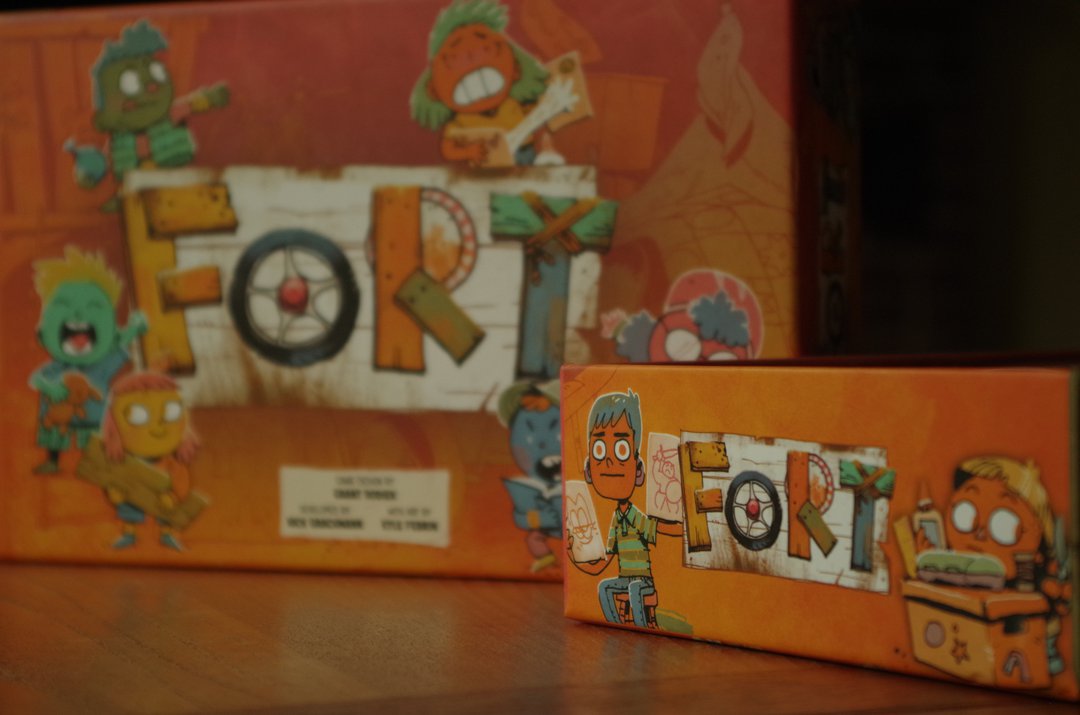
Look closely and you might find some of the Leder staff as kids in the art.
The Finishing Touches
Some will look at Fort and say, “it’s too random.” Others will say it’s not fair or that it’s all luck. Let’s be honest here, many of us have played our fair share of deck builders and hand management titles, and if we made those comments about any other game when we were new to it, we’d look back now and think how silly we were. Of course unfamiliarity with a game will lead to these kinds of knee-jerk initial views. Much like Root (another Leder title I just can’t stop referencing it seems), there’s a certain curve between messing around in the game just for fun, learning as you go, and knowing it well enough to play it on the next level. What we have here is a game that offers both experiences in a solid little box. You can mess around for a game night with friends if no one really cares who wins, contented to play a fun game for good times. And you can dig into it, memorizing favorite cards from the deck, scouting other players’ choices to sniff out their Made Up Rule, balancing your priority picks with those must-disrupt turns against your opponents, tuning a better engine faster than they can.
This is why I say that I think Fort is a game that’s going to fit a heck of a lot of gaming tables! It’s great for multiple crowds with different styles and tastes. It’s got fantastic production quality, it’s relatively cheap in cost, and the theme and artwork are a huge draw for most. You should know by now if it’s a little too in-your-face for your preferences, but if it’s not I’ll say this one more time: get on the preorder. I’m sure this game will be going to reprint after it sells out, but that could be months down the road. Leder Games will be releasing a free mod for Tabletop Simulator on July 28th, so if you're still on the fence after all this you could always give that a try as well. I hope that this review helps you figure out which side of the street to stand on, and if you’re like me, well, swing by my yard sometime. I’ve got this really cool fort I’m building, and there’s no shortage of pizza if you help out!